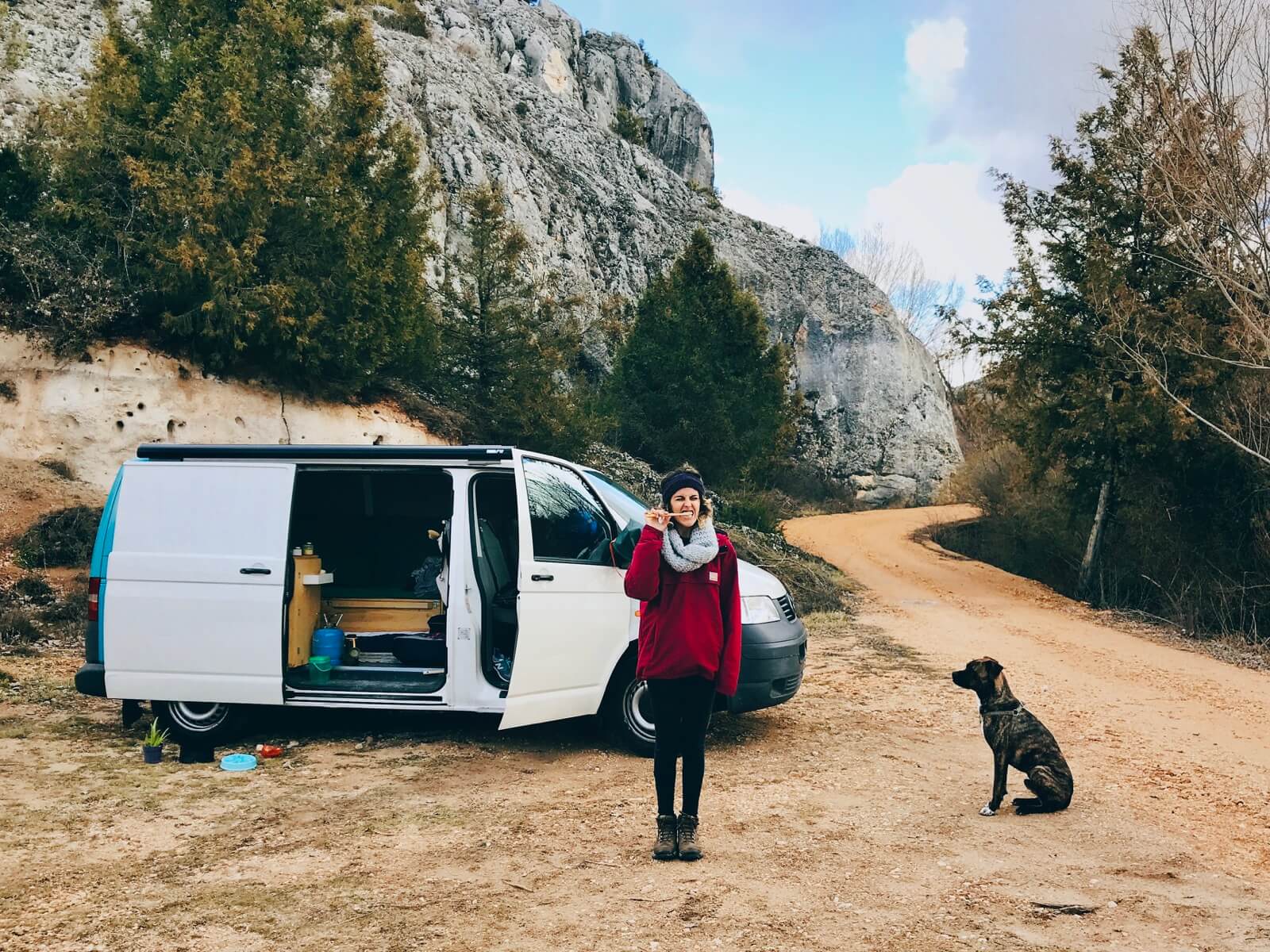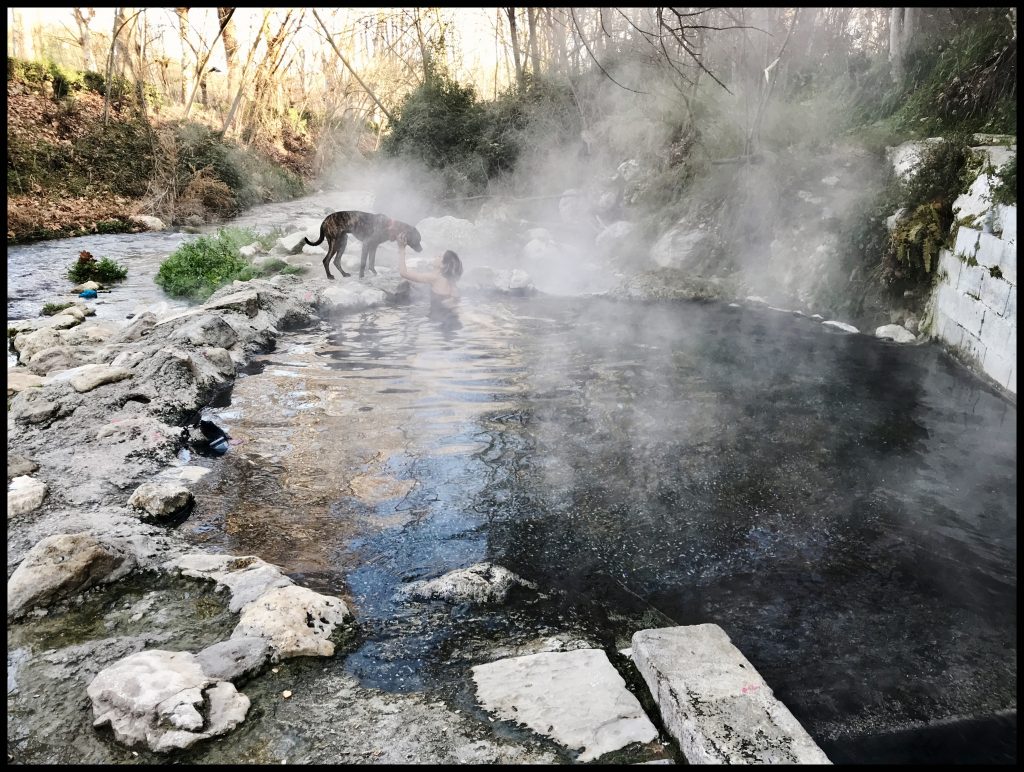You probably need a budget. It can be as simple as a paper and pencil. There are also a variety of apps depending on your needs and spending habits. I started using Trail Wallet on my phone through Latin America to keep track of our expenses and with this trip in Andalusia, it’s starting to feel necessary. Another app that is more for non-travel budgeting is Pennies which might work better for others.
Trail Wallet was created by Simon Fairbairn, one half of a digital nomadic couple from the UK who have been traveling nonstop since 2010. You can organize your spending by month or trip, and when you start tinkering with the options you’ll see you can customize it to your liking. You also have the ability to add categories of spending to a trip. In Latin America, we created an Alqo category for his food, veterinarian visits, and his dental surgery in Lima. We didn’t use tags at all, but now we have a personal category for anything extra that isn’t completely necessary or useful to both of us. Instead of separating those things into two categories, one for me and one for Patricia, we just tag our names to an item. It doesn’t matter how much each of us spends, but that we add it to know where our money goes. Patricia bought a pair of Natural World ecological shoes in Ronda, made locally in La Rioja, Spain using 100% organic raw materials and we just tagged her name next to the item. (I’ve already had mine since December. They’re the best.)
Our categories for van travel are different than our categories for backpacking. For our three weeks in Andalusia and our first van trip, we have:
- Groceries: any food items to be cooked or prepared, water, etc.
- Eating Out: cafés, churrerías, restaurants
- Fuel: diesel, self-explanatory
- Miscellaneous: things for the van, such as Campingaz refills, parking meters in cities, or other supplies
- Personal: see above
- Accommodation: occasional campground and one time just a shower
- Entertainment: self-explanatory
Trail Wallet allows multiple currencies in the same trip and fetches the current exchange rate. This is really handy if you buy a plane ticket or something online in dollars but are traveling in a different country. It shows your expenses in list view or pie chart, exports your trip data into a CSV file, can set a daily budget to aim for throughout the day.
The feasibility of long-term travel lives and dies by a daily average, especially if there is no income generation. In some Latin American countries, we missed our target by a few extra dollars a day. For Andalusia and our first time traveling this way, we decided on $36.50 between the two of us, for no other reason than it is close to €1,000 for a month. Our daily average was $35.62, or $17.81 per person per day. Not bad. Now that we’re “back home”, we feel we can reduce this even further (Other than our van, we haven’t had a place of our own since May 2017 when we left Mauritania. I’m ready for Germany.) Here’s the breakdown for three weeks in Andalusia:
| Category |
$ per day |
Total |
% of total |
| Groceries |
9.79 |
205.57 |
27.49 |
| Eating Out |
6.04 |
126.76 |
16.95 |
| Miscellaneous |
4.07 |
85.48 |
11.43 |
| Accommodation |
3.37 |
70.80 |
9.47 |
| Fuel |
9.28 |
194.79 |
26.05 |
| Personal |
1.88 |
39.47 |
5.28 |
| Entertainment |
1.19 |
25.00 |
3.33 |
| Total |
$35.62 |
$747.87 |
100% |
Obviously, our biggest expenses were fuel and groceries. Accommodation in Latin America included hostels but here, we were able to find free camping spots everywhere we went; on a hill overlooking Granada, in a meadow for two days near Grazalema, or a quiet spot off the road near olive farms.
There is a definite lack of touristy things in this budget. We prefer hiking and being outdoors these days. And not everyone would spend this much on groceries. Some are perfectly happy buying readymade meals or eating out everyday. I used to be this way. We love to cook and eat healthy and we buy local or bio in herbolarios.
Eating out is still bigger than we’d like. We met friends and family in Caceres and Sevilla and we invited them to eat. Subtracting these three meals, it would be $45.53. The remaining six items were cafés and a Moroccan lunch in Granada.
Slowing down helps immensely. Not everyone has the desire do this, especially for working professionals who have only a few weeks vacation a year, but it works for us. This will be even easier in the future when I can use a mobile hotspot and iPad to work from the van.


